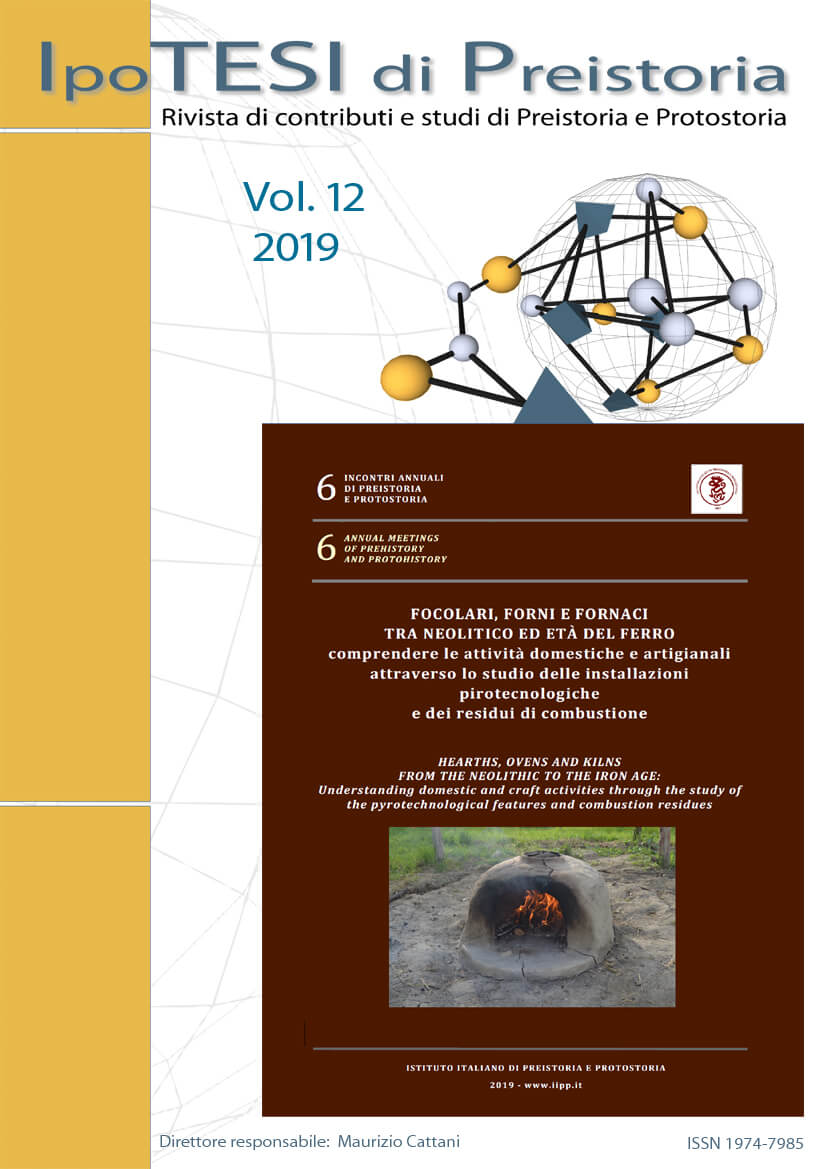To warm, to cook, to produce. The fire structures of the Etruscan settlement of Forcello di Bagnolo S. Vito: typological and functional aspects
DOI:
https://doi.org/10.6092/issn.1974-7985/10308Keywords:
Etruscans, settlement, Iron age, hearths, pit furnaces, kilnsAbstract
The Forcello site (Bagnolo S. Vito, Mantua) is the main Etruscan settlement north of the Po in the 6th and 5th centuries BC. It is approximately 12-hectare wide, with a fully urban pattern. It’s characterized by an orthogonal plan, defined by main and secondary roads that intersect each other orthogonally and outline blocks, occupied by both residential and productive buildings. The archaeological investigations are carried out in the settlement’s core area, over about 900 m2. After more than thirty years of excavations, nine archaeological phases have been recognized, resulting by the stratification of domestic activities, craft activities and catastrophic events. The extension and the long duration of the researches have brought to light dozens of fire structures: hearths, pit furnaces to cast bronze or to forge iron objects, remains of kilns. The wide typological variety of the fire structures can be evaluated according to the function of the buildings in which they are located, detected by study of archaeological findings and building techniques.Downloads
Published
2019-12-31
How to Cite
Rapi, M., Quirino, T., Castellano, L., Hirose, M., Amato, A., Barbieri, E., & Busnelli, S. (2019). To warm, to cook, to produce. The fire structures of the Etruscan settlement of Forcello di Bagnolo S. Vito: typological and functional aspects. IpoTesi Di Preistoria, 12(1), 225–250. https://doi.org/10.6092/issn.1974-7985/10308
Issue
Section
Conference papers
License
Copyright (c) 2019 Marta Rapi, Tommaso Quirino, Lorenzo Castellano, Mari Hirose, Alfonsina Amato, Elena Barbieri, Selene Busnelli
Copyright for articles published in this journal is retained by the authors, with first publication rights granted to the journal. The authors agree when submitting their work that it can be copied by anyone for noncommercial purposes but only if proper credit is given. Thus by virtue of their appearance in this open access journal, the articles have been declared free to use, with proper attribution, in noncommercial settings. All authors are responsible for the content of their work, including proper citation, attribution and usage permissions.
This journal is licensed under a Creative Commons Attribution NonCommercial 4.0 International License.
See also our Open Access Policy.
See also our Open Access Policy.





